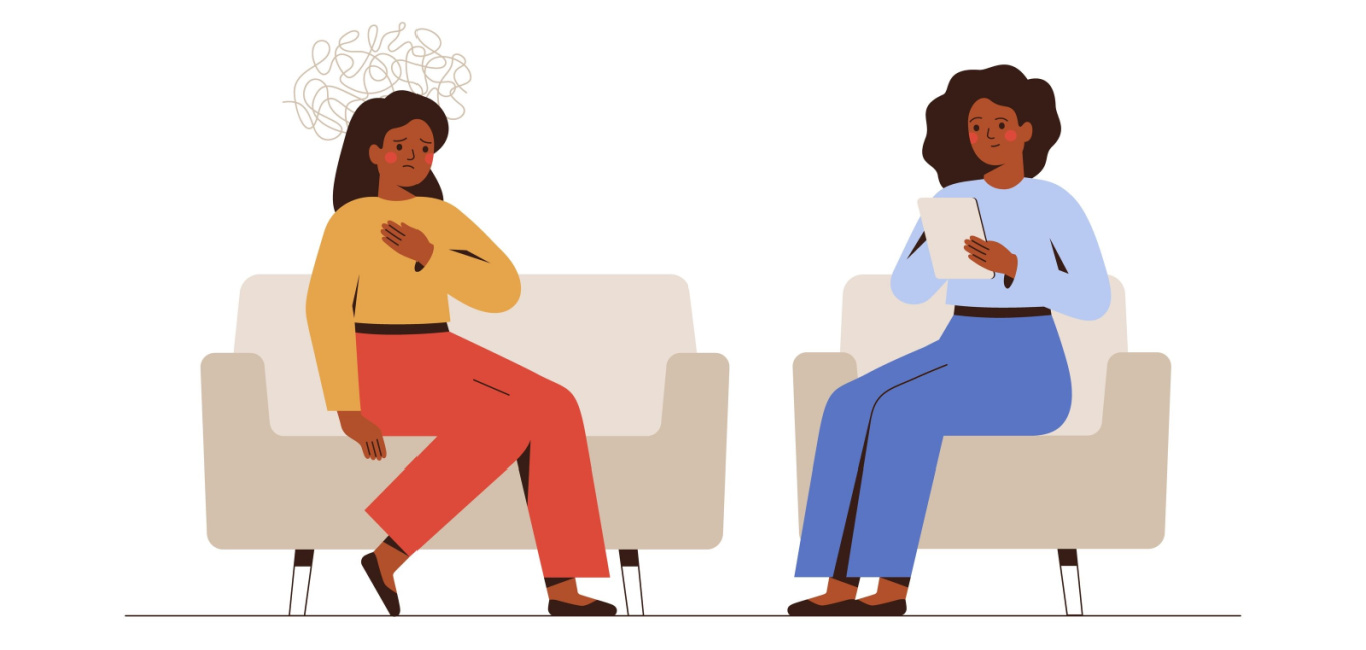
In 2016, Brisbane-based Jane Douglas realised that she had been dwelling on a negative thought for hours while at work. She observed how the feeling made her anxious and stressed. “I felt stuck in a cycle of chaos and negative thoughts and feelings and was unable to find any relief,” she says.
Despite trying various traditional forms of treatment such as medication and talk therapy, she found herself trapped in a cycle of negative thoughts and feelings. Soon she recognised the power of her thoughts and decided to change her mindset that helped her through the journey to recovery.
She tried to analyse her thoughts in a rational manner for which she identified the negative thought first. This was followed by challenging that thought by asking herself if the thought is valid. She realised that the evidence against it was stronger and that the thought was not entirely true. She then replaced the negative thought with a more balanced and realistic one, “I am doing my best, and that is enough.”
The exercise helped her break the negative thought cycle by changing her thoughts, feelings, and behaviour. She could control her thoughts and emotions that led to reduced anxiety and depression.
What is cognitive behavioural therapy (CBT)
CBT is a type of psychotherapy that focuses on the relationship between an individual’s thoughts, feelings, and behaviours. It is based on the idea that negative thoughts and emotions can lead to negative behaviours, and that by changing these thoughts and emotions, one can change one’s behaviour.
“CBT is an evidence-based treatment and has been shown to be effective in treating a wide range of mental health conditions including depression, anxiety disorders, and post-traumatic stress disorder (PTSD),” says Vandana S, counselling psychologist, Psychoflakes, Bengaluru.
Advantage and Disadvantage
A 2020 study published in The Lancet found that CBT was more effective than antidepressants in the treatment of mild to moderate depression. Moreover, a 2022 meta-analysis study found that CBT was as effective as medication in managing anxiety disorders. It was also found that using CBT along with medicine is an effective adjunct treatment.
Vandana says that there are a number of advantages of using CBT for treating mental health conditions. One of them is that it is a relatively short-term treatment. This makes it a more cost-effective option. Moreover, CBT is a skill-based therapy, which means that individuals who receive CBT will learn skills that they can use to manage their symptoms even after the therapy has ended.
Besides it requires commitment and those who are not able to attend regular therapy sessions may not be able to reap its benefit, says Aparajit Sandhu, counselling psychologist, Chandigarh. CBT may not be effective for individuals who have severe mental health conditions or who have not responded to other treatments.
CBT: A Step-by-step guide
CBT is a structured, goal-oriented therapy that typically consists of several steps. Vandana and Sandhu share a general overview of the step-by-step process of CBT:
- Assessment: The therapist will assess the individual’s symptoms, medical history, and any current stressors. This will help the therapist to develop a treatment plan that is tailored to the individual’s specific needs.
- Setting therapy goals: The therapist will then work with the individual to set specific therapy goals. These goals should be specific, measurable, and achievable, and should be focused on addressing the individual’s negative thoughts and behaviours.
- Identifying negative thoughts and patterns: The therapist will work with the individual to identify negative thoughts and patterns of behaviour that are related to their symptoms.
- Challenging negative thoughts: Once negative thoughts have been identified, the therapist will help the individual to challenge and change these thoughts. This may involve questioning the evidence for these thoughts, looking for alternative explanations, and developing a more balanced and realistic perspective.
- Changing behaviour: The therapist will then work with the individual to change their behaviour in ways that will help them to achieve their therapy goals. This may involve teaching the individual new coping skills or helping them to develop a more positive and realistic outlook on life.
- Review progress: The therapist will regularly review the individual’s progress and adjust the treatment plan accordingly.
- Maintaining progress: The therapist will also help the individual to develop a plan for maintaining their progress after the therapy has ended. This may include self-monitoring the symptoms and developing strategies for dealing with potential relapse.
CBT can be conducted in an individual or group therapy session, and the duration may vary depending on the case. The CBT process is collaborative as the therapist will work with the individual to set goals, develop strategies and techniques to manage thoughts and feelings, and evaluate progress over the course of the treatment.
Self-tracking
Akash Sinha, 34, civil engineer, Ranchi, after two failed attempts in Management Aptitude Test (MAT) exam led to depression. He applied CBT under professional guidance in mid-2016 and won his battle against depression in early 2017 without medication.
He talks about his real-life experience on how he tracked his progress.
- Use a thought diary: Keeping a thought diary can help individuals identify and track negative thoughts and patterns of thinking. One can write on a daily or weekly basis and see how thoughts and behaviours have changed over time.
- Utilise self-report measures: Self-report measures are standardised questionnaires that assess symptoms such as anxiety and depression. These can help in observing the change in symptoms over time and give a clear picture of the progress made.
- Regular feedback from the therapist: During therapy sessions, the therapist will discuss the progress made, and identify any areas that need further attention. It is important to have regular feedback from the therapist, to track progress and keep oneself accountable.
- Conduct behavioural experiments: Behavioural experiments are a way of testing the validity of negative thoughts by testing them in real-life situations. This can help one to differentiate between negative thoughts and reality and make changes accordingly.
- Regular monitoring and measuring of progress: Regular monitoring and measuring of progress is essential to increase motivation and confidence. By regularly monitoring progress, individuals can better understand their own thought patterns and behaviours.
Douglas, now 32, who has been on a journey of healing and self-discovery through her membership in a depression and anxiety support group on Facebook, says that her progress was not always linear. There were days when she felt like giving up, but she did not. Looking back, she says that she is filled with a sense of pride and accomplishment.
Douglas now helps people in the support group and guides others on the importance of mental health and the outcomes of CBT, while Sinha cracked his MAT exam in 2018 and is now happily living his dreams.


















